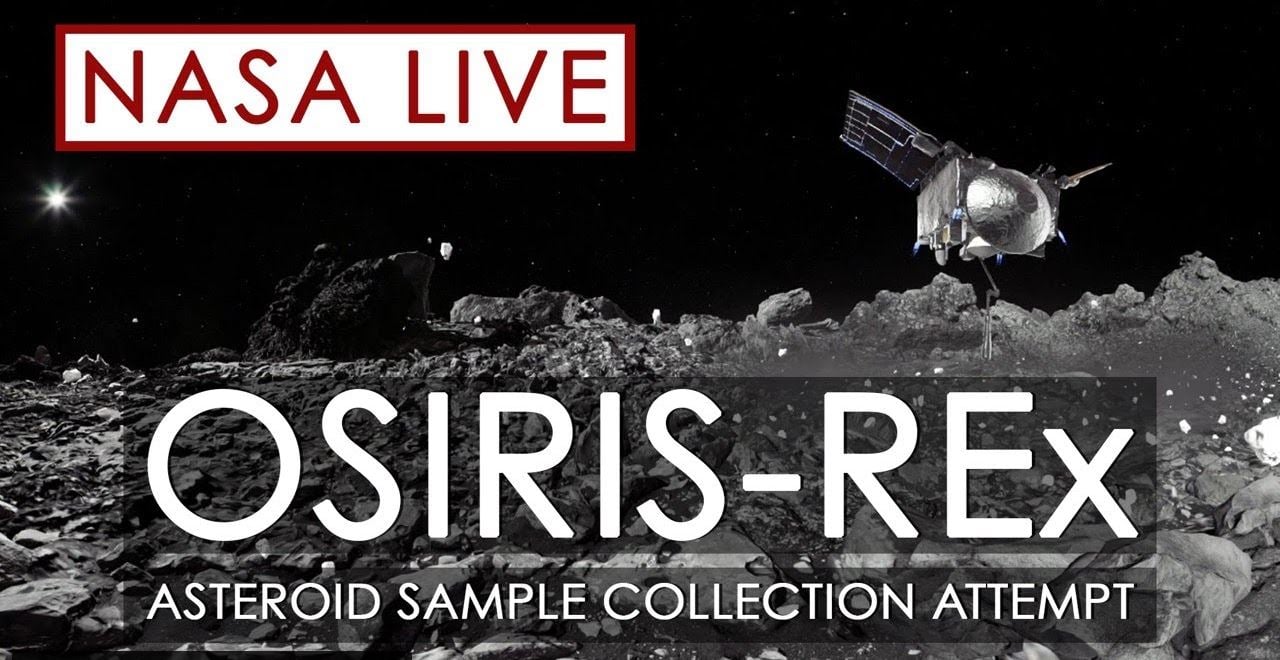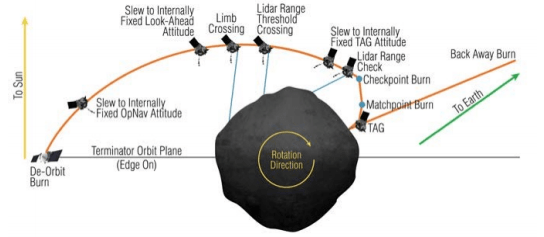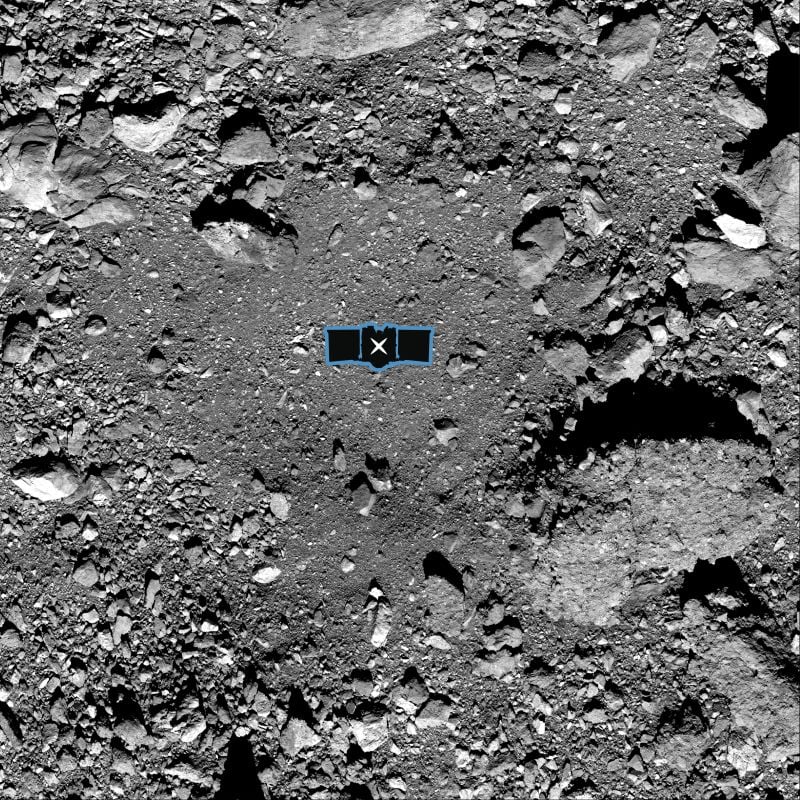Today's the day! The OSIRIS-REx spacecraft is going to reach out and boop asteroid Bennu! You can watch the broadcast here as the Origins, Spectral Interpretation, Resource Identification, Security-Regolith Explorer (OSIRIS-REx) mission attempts to collect a sample of an asteroid on Tuesday, Oct. 20, at 6:12 pm EDT (5:12 pm CDT, 3:12 PDT).
Live coverage will begin at the feed above at 5 pm EDT (4 pm CDT, 2 pm PDT), with a feed of the Mission Support Area during the TAG event.
OXIRIS-REx will descend to the surface of Bennu, and touch down for only a few seconds using a "Touch-And-Go," or TAG, maneuver. It will attempt to capture at least 60 grams of rocks and dust from the asteroid by pumping a shot of compressed nitrogen gas onto the surface, which will stir up particles that will then be collected by a sampler.
The spacecraft will need to target Bennu's rocky surface with great accuracy, touching down within an area just 52 ft (16 m) in diameter. During the maneuver, the spacecraft and the asteroid will be approximately 207 million miles (334 million km) from Earth.
At that distance, there's an 18.5-minute delay for the signal to get from the spacecraft to the Earth, So, the entire sequence is autonomous, with software on board that will navigate OSIRIS-REx safely to the surface, and if it detects any hazards or boulders, it will perform a backaway burn to keep the spacecraft safe, and attempt another sampling event later.
OSIRIS-Rex is scheduled to depart Bennu in 2021, and to deliver the collected sample to Earth on Sep. 24, 2023.
The Touch-And-Go Sample Acquisition Mechanism (TAGSAM) features a sampling head on the end of an instrument arm 3.35 m (11 ft) long. OSIRIS-REx will extend that arm as it approaches the asteroid, and while OSIRIS-REx is slowly lowering itself over the sampling site, the momentum will carry the sampling head onto the asteroid's surface. It'll only be there for about five seconds, long enough for TAGSAM to release puffs of nitrogen to stir up particles. The particles will be caught by surface pads.
After collecting its sample, OSIRIS-REx will slowly back away from Bennu. How will we know if the maneuver was a success? The spacecraft will perform two separate checks.
First it'll use its SamCam (Sampling Camera) to capture images of the sampling head to verify the presence of material. Then it will perform a spin maneuver that allows it to determine the mass of the collected sample. If there were problems, the spacecraft has enough nitrogen for two more sample attempts. If it can't navigate safely to Nightingale, then it can attempt a sampling operation at back-up site Osprey.
You can find out more details on the mission at the OSIRIS-Rex website.
 Universe Today
Universe Today


